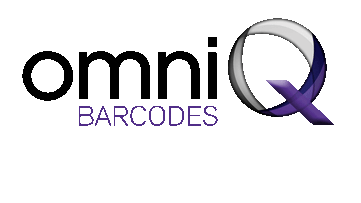
RFID: Because Guessing Isn’t a Business Plan
If you’ve ever spent too much time counting, scanning, or searching for lost items you know that it’s time for something smarter.
Meet RFID technology: fast, reliable tracking that helps your business see everything, instantly
What Is RFID, Anyway? (No, it’s not magic)
To kick off, RFID stands for Radio-Frequency Identification. It’s like a barcode’s cooler cousin that doesn’t always need to be in plain line of sight.
Here’s how it typically works :
- You attach an RFID tag to an object. This tag has a chip and an antenna.
- A reader (handheld fixed scanner attached to the ceiling or entryway, or somewhere in between) emits a radio wave (an interrogation signal).
- The tag “wakes up” (if it’s a passive tag) from that wave, then sends back data — usually a unique ID, maybe extra bits of info
- The reader gets that signal, decodes it, and passes the data to backend software (ERP, WMS, asset-tracking, whatever you’ve got).
- You then see “Object 1234 is at location A at time T” instead of “Hm … we may or may not have it somewhere in the warehouse.”
Tags can be passive (no battery, powered by the reader’s wave) or active (with battery, for longer
Where It Actually Helps ?
Where RFID Makes Life Easier
1. Warehouse & Inventory Automation
This is one of the most powerful and visible advantages of RFID.
In a traditional warehouse, workers spend hours manually scanning barcodes or counting boxes ,a slow and error-prone process. With RFID technology, everything changes.
· Fixed portals at doorways or along conveyor lines automatically read every tag as items move through. You get live updates on what entered, what shipped, and what’s still sitting on the floor.
· Handheld RFID readers make it easy for employees to locate misplaced or unscanned items. Instead of searching aisle by aisle, they can simply follow the reader’s signal to the exact spot.
· Real-time inventory counts mean you no longer wait until the end of the month (or quarter) for a manual audit. The system updates continuously, giving you accurate visibility every minute of every day.
The result? Faster operations, fewer errors, and a much clearer picture of your entire warehouse from receiving to shipping.
2. Manufacturing / Shop Floor Visibility
You can tag parts, subassemblies, tools, or anything really. As those items move from station to station, readers pick them up. You begin to see bottlenecks, track throughput, and optimize.
RFID can help with parts tracking, error reduction, and smoother assembly flows by giving you instant visibility
3. Asset Tracking & Equipment Management
You probably have tools, machines, carts, even computers that wander around, get lost, get borrowed. Tag them, and you can locate them quickly.
- Maintenance scheduling: track when a machine was last serviced.
- Prevent roll-away or loss of expensive gear.
- Know utilization rates (is that fancy tool sitting idle 80% of the time?).
4. Retail / Distribution / Cross-Docking
- As goods arrive, RFID readers at docks detect incoming units.
- As they are shipped out, the same or different readers detect outgoing flow.
- It helps with shrink (loss/theft), accuracy of shipments, and speed..
5. Healthcare, Labs, Hospitals
Believe it or not, RFID is heavily used in tracking medical instruments, samples, even surgical trays or beds. Why? Because misplacing a tool or failing to sterilize can be costly (in money and lives)
RFID in Action:
In a hospital or lab, every instrument or tray is tagged with a small RFID chip. As items move through sterilization, preparation, and operating rooms, fixed readers automatically log their location and status in real time. When a tray leaves the sterilization area, the system verifies that all required tools are present and sterilized. If a single instrument is missing or skipped, the system immediately flags it before surgery begins.
Nurses and technicians no longer have to manually count or record items ,instead, RFID ensures automated traceability from use to cleaning to storage. It also helps facilities plan maintenance schedules, track expiration dates for surgical kits, and even monitor asset utilization rates across departments.
6. Transportation, Logistics, Field Services
RFID readers are used in scenarios like baggage tracking, in-vehicle tracking, item locating, and even weird stuff like railcar reads. In fact, that is how it all started. When your trucks move, packages move, and you can “see” everything in motion. The more RFID is adopted throughout the supply chain, the better the workflow.
RFID doesn’t just track your inventory it gives you confidence.
You’ll spend less time searching and more time doing what matters.
If you would like to learn more about what RFID can do for your business let us know. We’re happy to help.
